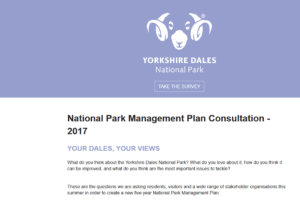 English National Parks in the uplands, particularly the Yorkshire Dales NP, Peak District NP and North Yorks Moors NP (and while we are at it the Nidderdale AONB, Forest of Bowland AONB and North Pennines AONB) are being forced by public pressure to address the issues of wildlife crime and raptor persecution in their areas.
English National Parks in the uplands, particularly the Yorkshire Dales NP, Peak District NP and North Yorks Moors NP (and while we are at it the Nidderdale AONB, Forest of Bowland AONB and North Pennines AONB) are being forced by public pressure to address the issues of wildlife crime and raptor persecution in their areas.
Both the Peak District NP and Yorkshire Dales NP have consulted the public on their priorities for their next five years and been told that they need to address wildlife crime. I’ll come back to the Peak District tomorrow.
Having been told by the public that their consultation on future management was complacent on the subject of wildlife crime and its link to driven grouse shooting, The Yorkshire Dales NP (through whose area I travelled on Saturday and Sunday) are now responding. Public opinion influences public bodies who are spending public money – that’s how it works.
The Yorkshire Dales NP has now published the results of the ‘Your Dales’ consultation. Not surprisingly, landscape and scenery topped the list of ‘likes’ by respondents. I agree – even in the heavy showers this weekend, the scenery was impressive. Wildlife came second on the list of ‘likes’ and so it should, although it would score a lot higher with many of us were there rather more of it! A rainy weekend in September doesn’t provide the best conditions for wildlife-watching but it was noticeable that there were lots of Kestrels and Meadow Pipits, oh yes, and Red Grouse, but not a lot else although the rather sodden Short-eared Owl looked miserable but handsome.
But when it comes to identifying the areas for improvement, non-residents (ie visitors and taxpayers who maintain the economy of the National Park) put ‘Wildlife conservation and enhancement, tackling bird of prey persecution’ at the top of their list. And when it came to identifying the areas which need tackling over the next three years non-residents identified ‘Wildlife protection and enhancement’ as the top issue and ‘Raptor persecution/birds of prey’ as fourth in the list (although there must be a high probability that those saying the first also meant the latter).
Wildlife crime gets a special mention in the short report as follows:
[registration_form]
Lets hope the same applies to the National Trust who is also kept going by members money – it really is time for our wildlife to be protected properly and stop this stranglehold of estates who can break the law and nothing happens to them. Well done to everyone who has a wildlife conscience and have made their views known … the public do not want the empty uplands or anymore more lies from shooting estates about them being conservation minded – we’re done with the bull – its time they stepped up to the mark and stop emptying our uplands of anything but grouse.
Don’t want empty lowlands either.
The sectoral divisions within the broad conservation movement are a key weakness in improving our environment: National Parks have a long history of sidelining wildlife, even when it benefits their landscape objectives – the designation of most of the moorland in the North York Moors as SSSI then Natura 2000 added a massive additional layer of protection to the National park but was inspired by RSPB input to the park plan, followed by RSPB surveys. Equally, conservation doesn’t give much thought to landscape, though fortunately its aims generally run pretty much in parrallel with good landscape. The people agenda is more difficult – conservationists seem to have inherited a lot of private landowning attitudes, with a first resort of keep out or ban.
It is fantastic news that at long last the message may be starting to get through that systematic persecution of raptors is a blot on the reputation of our National Parks – one very practical thing the NPs can do is talk to public/3rd sector land owners about whether Grouse Shooting is really high on their priority list – strating with the biggest, the national Trust.
Not sure whether you mentioned the 18,400 views of the HH video to stress how many people have watched it, or how few! It still appears that this RSPB video has been seen by less than 2% of the RSPB membership.